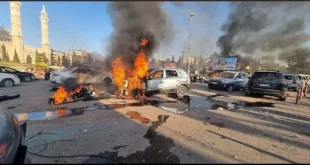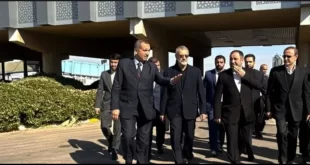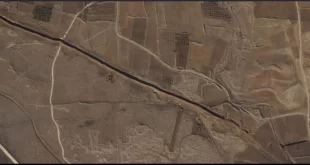Nov 14, 2013, Information Clearinghouse
The release of the White House “Government Assessment” on August 30, providing the purported evidence to support a bombing attack on Syria, defused a conflict with the intelligence community that had threatened to become public through the mass resignation of a significant number of analysts. The intelligence community’s consensus view on the status of the Syrian chemical-weapons program was derived from a National Intelligence Estimate (NIE) completed late last year and hurriedly updated this past summer to reflect the suspected use of chemical weapons against rebels and civilians.
The report maintained that there were some indications that the regime was using chemicals, while conceding that there was no conclusive proof. There was considerable dissent from even that equivocation, including by many analysts who felt that the evidence for a Syrian government role was subject to interpretation and possibly even fabricated. Some believed the complete absence of U.S. satellite intelligence on the extensive preparations that the government would have needed to make in order to mix its binary chemical system and deliver it on target was particularly disturbing. These concerns were reinforced by subsequent UN reports suggesting that the rebels might have access to their own chemical weapons. The White House, meanwhile, considered the somewhat ambiguous conclusion of the NIE to be unsatisfactory, resulting in considerable pushback against the senior analysts who had authored the report.
In a scenario unfortunately reminiscent of the lead up to Iraq, the National Security Council tasked the various intelligence agencies to beat the bushes and come up with more corroborative information. Israel obligingly provided what was reported to be interceptions of telephone conversations implicating the Syrian army in the attack, but it was widely believed that the information might have been fabricated by Tel Aviv, meaning that bad intelligence was being used to confirm other suspect information, a phenomenon known to analysts as “circular reporting.” Other intelligence cited in passing by the White House on the trajectories and telemetry of rockets that may have been used in the attack was also somewhat conjectural and involved weapons that were not, in fact, in the Syrian arsenal, suggesting that they were actually fired by the rebels. Also, traces of Sarin were not found in most of the areas being investigated, nor on one of the two rockets identified. Whether the victims of the attack suffered symptoms of Sarin was also disputed, and no autopsies were performed to confirm the presence of the chemical.
With all evidence considered, the intelligence community found itself with numerous skeptics in the ranks, leading to sharp exchanges with the Director of Central Intelligence John Brennan and Director of National Intelligence James Clapper. A number of analysts threatened to resign as a group if their strong dissent was not noted in any report released to the public, forcing both Brennan and Clapper to back down. This led to the White House issuing its own assessment, completely divorcing the process from any direct connection to the intelligence community. The spectacle of CIA Director George Tenet sitting behind Secretary of State Colin Powell in the United Nations, providing him with credibility as Powell told a series of half-truths, would not be repeated.
Philip Giraldi, a former CIA officer, is executive director of the Council for the National Interest.
 Syria Support Movement solidarity with the Syrian people
Syria Support Movement solidarity with the Syrian people




